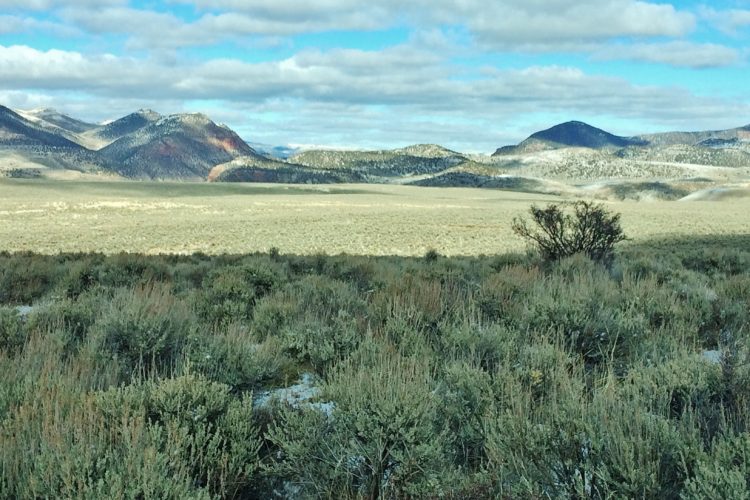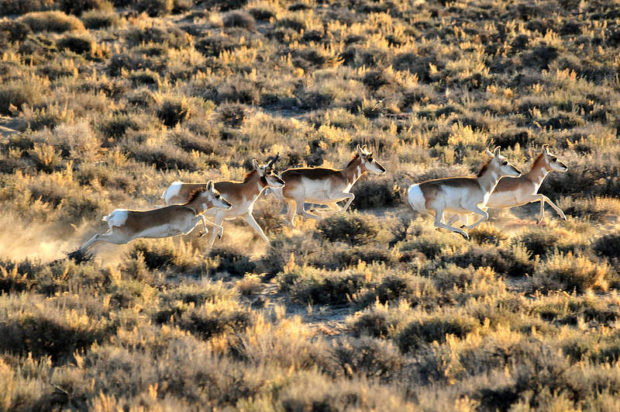We have much more to do and your continued support is needed now more than ever.
NDAA Provisions a Threat to our Western Sporting Traditions, Not National Security
Attacks on greater sage-grouse have no place in a defense spending bill.

Sportsmen and women know well that hunting is about much more than the hunt. Many of our best memories are not of the animals we brought home but of those we simply had wild encounters with. These experiences are burned into our memory banks and make up the fabric of our sporting lives. These experiences are why we care so deeply for America’s public lands. A large swath of those public lands include the Western sagebrush sea, which is one of the best places to experience both great hunting and unexpected wildlife encounters.
You might send a jackrabbit speeding off while scouting mule deer, learn about hunting from a coyote crisscrossing the adjacent hillside, or flush out a short-eared owl while walking along a grassier stretch in pursuit of pheasants.
These unexpected encounters not only liven up the hunt but tell us a little something about the landscape we are walking – including its health. The ultimate indicator of a healthy sagebrush system is the greater sage grouse itself– a big bird weighing up to five pounds, which has declined in population precipitously over the past several decades as its habitat has been degraded and destroyed by development. So, despite spending hundreds of days in sage country I have only met these wily birds on a few occasions.
Hunters have gone to great lengths to keep these sagebrush systems healthy and full of wildlife, as they are home to many big game species, and the greater sage-grouse, whose well-being is considered an important indicator for general ecosystem health.

Déjà vu all over again: Congress revives attacks on sage-grouse.
It feels like déjà vu, but yet again, a provision in the National Defense Authorization Act (NDAA) has been inserted to undermine the sage grouse conservation plans, which are designed to protect the sage-grouse and sagebrush habitat across eleven Western states.
These plans were developed collaboratively by the Department of the Interior, the affected states, hunters, environmental groups, ranchers, scientists, and the oil and gas industry, and have no nexus with funding the military. Blocking them would derail years of discussion, planning, and on-the-ground action to protect the sage-grouse and conserve its habitat.
The provision is in the House of Representatives’ version of the NDAA and would also prevent the sage-grouse from being listed under the Endangered Species Act for the next decade. This is an action that would practically guarantee further losses to the greater sage-grouse population and to the greater sagebrush ecosystem by first blocking plans intended to help save the species, and then removing the only other available mechanism to help the species and ecosystem rebound.
Smart steps to save a bird is no threat to our nation’s security.
These actions are a recipe for disaster that could spell doom for a bird that used to fly our Western skies by the millions, and this effort dishonors the thousands of Westerners who labored for years to work out the compromise represented in the plans.
Who or what will be next if we let this dangerous precedent proceed? What if Congress decided to reverse years of collaborative work in Texas, Nebraska, Missouri or South Carolina? Would the good folks of those states sit back while Congress dismantled their hard work?
This is simply bad policy that cannot be allowed to proceed.
A defense funding bill is not germane and should not decide the future of the sage-grouse and the entire sagebrush ecosystem nor any other issue aside from defense spending. The potential cost is too high and the rationale is wrong – taking moderate steps to save a bird in need is simply not a threat to our nation’s security.
Members of Congress who claim that a five-pound bird threatens defense readiness are taking advantage of an important piece of legislation that shouldn’t be weighed down by conservation issues. Similarly, conserving the sagebrush sea, along with the hundreds of wildlife species that depend upon its continued health is too important of an issue to be treated as a political trading card. Let’s stop diverting time and attention away from the truth: that both defense and wildlife conservation are crucial issues that shouldn’t be lumped together to facilitate political posturing.





















